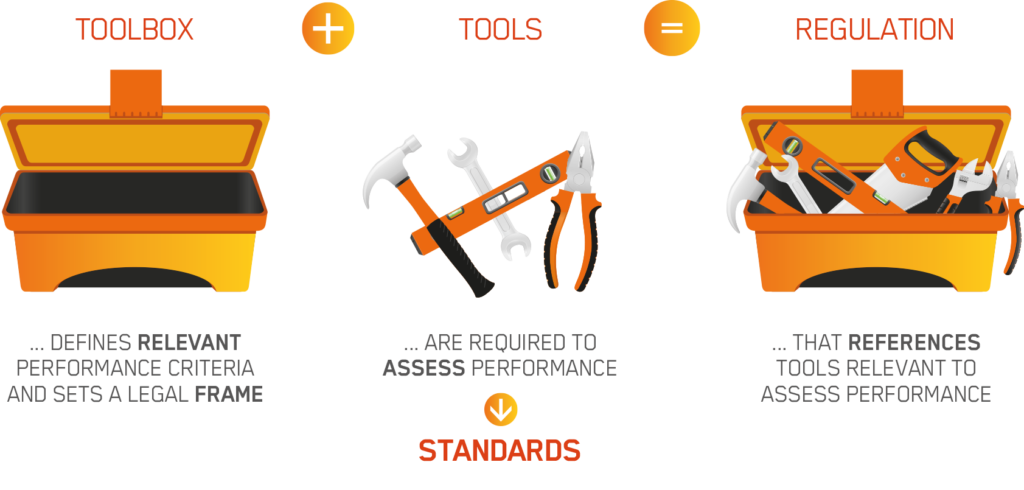Thanks to advances in technology, potentially harm reduced alternatives to conventional cigarettes are being developed – and launched – at unprecedented rates.
We believe mandatory compliance with robust product quality, manufacturing and safety standards helps legitimise these Next Generation Products (NGPs), and must be at the forefront of their risk proportionate regulation.
Technical standards provide useful tools and methods for assessing NGP safety and quality, meaning they can play a significant role in defining what responsible regulation looks like.
But what are technical standards, how do they work and how does this underpin the public health concept of Tobacco Harm Reduction, or THR?
Josie Newman, Scientific Market Materials Executive: Let’s start with the basics − what is a standard?
Liliana Chaves: Simply put, technical standards are an agreed way of doing something.
They are documents, which establish the terminology, specification of design, materials or testing procedures for a product, process or service.

ISO 3103:1980 outlines a method for “extracting soluble substances” from tea leaves with boiling water.
And they’re ubiquitous in just about every industry you can think of, from food and beverages to electronics, aviation and pharmaceuticals.
Technical standards make sure your car is safe to drive and ensure your phone charger fits the socket in the wall. There’s even a technical standard for brewing tea to determine “meaningful sensory comparisons”.
JN: So, what does a standard do?
LC: It’s helpful to think of technical standards as a tool which a product, process or service can be measured against.
Standards simplify comparisons between products, promote quality and safety, facilitate trade and encourage sustainability and innovation.
They sometimes are even required to demonstrate regulatory compliance.
JN: How do we know they’re reliable and not anti-competitive?
To write a standard, experts in the field – including consumer associations, academia, researchers, NGOs, industry, government bodies – voluntarily cooperate to share their knowledge to determine principles of best practice.
They agree on a text which undergoes various stages of debate. This provides all subject matter experts with a say, helping build consensus between all parties. At each stage of debate, all decision-making is governed by principles of impartiality, transparency and openness.
This means technical standards represent a neutral agreement of best practice from expert stakeholders across public, private and third parties, making them a legitimate and reliable tool for assessment.
Technical standards are intended to create a supportive standards environment − not drive anti-competitive behaviour. They should never represent the agreement of a select number of industry players alone, discussion between stakeholders must be open to all interested parties.
JN: Who oversees this process?
LC: Well, a standard is usually published by a national, regional or international standards body.
If a product, process or service is used in lots of different states, regionally or globally, it’s useful to have a one single, uniform standard rather than lots of very similar ones.
That’s why local standards organisations like the UK’s BSI (British Standards Institute) are usually also members of larger regional (like CEN, the European Committee for Standardisation) and international groups (like ISO, the International Standards Organisation).
Broadly:

National standards bodies can be part of regional groups (such as CEN), as well as ISO.
JN: Standards sound quite similar to regulation – what’s the difference?
LC: Adopting a technical standard is voluntary.
Failure to comply with laws or regulations on the other hand is illegal.
Unlike regulations, standards are not a form of legislation. However, standards and regulation are often inextricably linked.
A regulation sets the legal requirement and standard often sets the testing regime and thresholds that are required to meet the regulation. Standards therefore provide a technical tool to measure compliance with the boundaries set by legislation.
It’s helpful to think of regulation as a toolbox which not only outlines the mandatory legal framework, but also denotes the performance criteria a product, process or service must fulfil. In this analogy, standards are the tools themselves. By basing regulation on standards, regulators can establish the detail needed to measure these limits.

Standards can provide useful instruments to establish the technical detail in regulation, a bit like the tools that fill a toolbox.
JN: Why is standardisation so important for NGPs?
LC: If NGPs are to offer a genuine alternative to conventional cigarettes, they must be relatively less harmful, satisfying and appealing to adult smokers.
Ensuring they’re high quality in terms of their design, engineering, ingredients, manufacture and performance dramatically improves the chances of meeting both these criteria.
How do we measure an NGPs harm reduction potential and relative quality? First we need to find common tools to assess NGPs.
The way technical standards are written through a consensus between NGP experts (from regulatory authorities, the industry and consumer groups alike), makes them a reliable and legitimate tool for NGP assessment.

Technical standards can provide tools to assess NGPs.
Equipped with methods to assess NGPs, regulation can use technical standards to easily set minimum limits and requirements for safety and quality – creating a compulsory body of product standards NGP manufacturers need to adhere to.
This endorses good quality NGPs, whilst prohibiting dangerous, non-compliant ones.
To ensure high NGP quality, we believe all products must be regulated by comprehensive policy frameworks, underpinned by mandatory compliance with high product standards. Read our full position here.
Since, technical standards are reliable tools for measuring compliance, they can form the backbone of a robust framework for NGP product standards – and latterly effective, responsible regulation.
This is essential not only for product quality, but – since responsible and effective regulation ensures adult smokers receive satisfying and high-quality products that encourage transition from cigarettes – also for potential harm reduction generally.
JN: What technical standards are there for NGPs?
LC: As most NGPs are relatively new, certain specific standards are still being developed. However, some do already exist.
For instance, the French standardisation body AFNOR and the UK BSI published the first voluntary standards on vape products in 2015 – with the ambition to drive up quality across both devices and e-liquids.
Since then, both ISO and CEN have published standards on vapour products, with more in draft.
The technical standardisation of newer NGPs, like heated tobacco is ongoing – with a working group, comprised of expert representatives from the industry, regulatory and consumer bodies, appointed to draft the first standards.
Draft standards for tobacco-free oral nicotine products are also in development.
JN: How are our scientists involved in this process?
LC: As a responsible multi-category manufacturer, we continually assess our NGPs to ensure they’re of the highest quality. We’d like to see the rest of the industry adopting these high standards, as well as future ones, incorporating them – to ensure every adult smoker who tries an NGP has a satisfying experience they’re keen to repeat.
This will potentially have an enormous positive impact on tobacco harm reduction – and public health.
That’s why our experts – in all our product areas – support and contribute to multi-stakeholder, technical standardisation around the world.
So far, we’ve helped to publish multiple standards on NGPs, including the first international standard to determine levels of nicotine, propylene glycol and glycerol in e-liquids.
JN: Definitely an important topic! Thanks Liliana.
—
Technical standards in a world Beyond Smoke
Although both the scientific evidence base and adult smoker adoption rates demonstrate the significant potential of NGPs in helping facilitate tobacco harm reduction, technical standards remain crucial in continuing to shape their positive contribution to public health.
Last year, the US EVALI outbreak resulted in over 3000 lung illnesses and several deaths. The cause? A proliferation of black-market cannabis vaping products, where THC-containing liquids were cut with vitamin E acetate – subsequently found to be the main chemical of concern. This substance is banned in regulated e-liquids in many other countries including across Europe.
The outbreak and its tragic consequences serves as an important reminder why robust, well-defined and industry-wide quality standards for NGPs – especially in areas such as ingredient selection – are essential.
Rigorous, scientifically substantiated, universal NGP standards create a level playing field for manufacturers, help ensure product quality and provide adult smokers with access to high quality products and information they can trust.
After all, regulators and consumers alike need to understand exactly what good quality, potentially harm reduced products look like – and exactly how to measure them.
That’s why we believe technical standards are at the heart of tobacco harm reduction – and a world Beyond Smoke.
—
You are free to share this content with credit to Imperial Brands under a Attribution-NoDerivatives 4.0 International (CC BY-ND 4.0) license.
